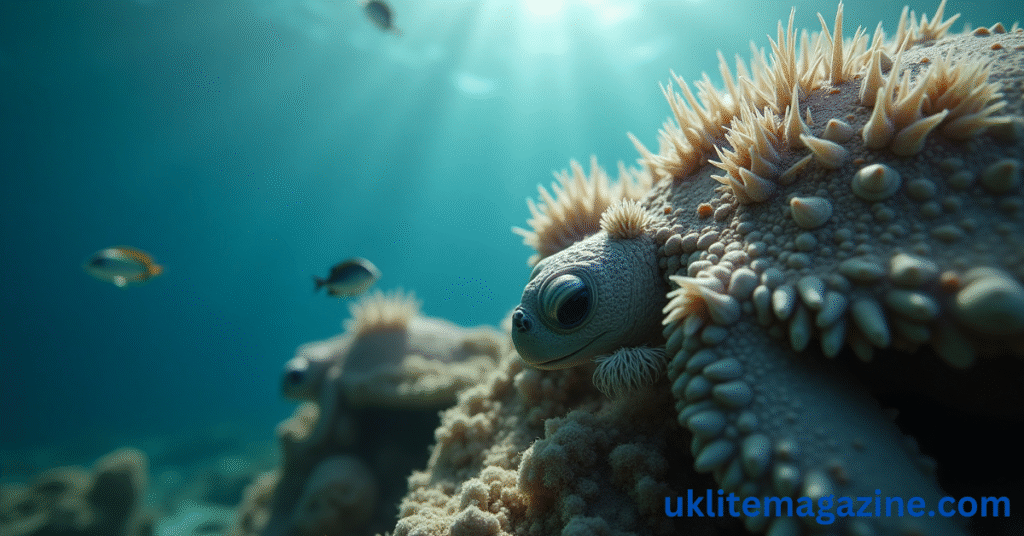Barnacles are small, hard-shelled marine creatures that often go unnoticed—until you spot them clinging to the bottom of a boat or the shell of a sea turtle. But there’s much more to barnacles than their sticky nature. In this article, we’ll explore what barnacles are, their types, how they live, and their importance in marine ecosystems.
What Are Barnacles?
Barnacles are marine crustaceans, meaning they belong to the same family as crabs and lobsters. Unlike their mobile relatives, barnacles are sessile, meaning they stay fixed in one place for most of their lives. They are known for attaching themselves to solid surfaces like rocks, docks, ship hulls, and even marine animals.
Barnacles start life as free-swimming larvae. After a short period, they find a surface to attach to and permanently cement themselves upside down. Once fixed, they grow a hard shell around their body to protect themselves from predators and harsh sea conditions.
Key Facts About Barnacles
Here’s a quick look at the most important facts about barnacles:
| Feature | Details |
|---|---|
| Scientific Classification | Crustacea, subclass Cirripedia |
| Habitat | Ocean surfaces—rocks, ships, marine animals, and more |
| Diet | Plankton and microscopic particles |
| Movement | Sessile (do not move once attached) |
| Reproduction | Sexual (most are hermaphrodites) |
| Shell Type | Hard, calcareous plates |
| Lifespan | Several years, depending on species and environment |
| Role in Ecosystem | Food source, bioindicators, and surface colonizers |
Types of Barnacles
There are over 1,000 species of barnacles, but most fall into two main types:
1. Acorn Barnacles
These are the most common. They form cone-shaped shells and often live in intertidal zones on rocks or boats. They do not have stalks.
2. Goose Barnacles
These have a long, flexible stalk that attaches them to floating objects like driftwood or ships. They are often found in deeper ocean waters.
How Do Barnacles Feed?
Barnacles feed by using their cirri, which are feathery appendages that they extend from their shell. These cirri sweep plankton and other tiny food particles from the water and bring them into the barnacle’s mouth. Feeding usually happens during high tide when they are submerged.
The Role of Barnacles in Marine Life
Despite being small, barnacles play important roles in the ocean:
-
Food Source: They are eaten by fish, sea stars, snails, and even some birds.
-
Bioindicators: Their presence can indicate water quality and environmental health.
-
Marine Ecosystem Structure: They often form colonies, creating microhabitats for other marine organisms.
However, barnacles also cause problems when they attach to boats, buoys, or underwater pipes, leading to maintenance issues and increased fuel consumption.
Are Barnacles Harmful To?
In nature, barnacles aren’t harmful to marine animals. However, if a large number grow on an animal like a turtle or whale, it may cause drag and make movement harder. For ships, barnacles can damage surfaces and reduce fuel efficiency, leading to higher maintenance costs.
Why Do Sea Creatures Get Barnacles?
Marine animals like whales, turtles, and crabs often host barnacles. Barnacle larvae attach to them because these animals offer a moving surface with regular access to nutrient-rich waters. The creatures themselves don’t attract barnacles—it’s simply a matter of being in the water at the right time and place.
What Lives Inside a Barnacle?
Inside the barnacle’s shell is a soft-bodied creature, much like a shrimp. It has appendages, a mouth, and reproductive organs. Once attached, the barnacle never moves again, using its cirri to catch food and reproduce while protected inside its hard shell.
Why Do Humans Get Barnacles?
The term “barnacles” is sometimes used to describe seborrheic keratoses, a type of harmless skin growth in humans. While not related to marine barnacles, these growths are common in older adults and can resemble rough, stuck-on patches. They are not caused by ocean barnacles and are purely a skin condition.
What Are Barnacles Made Of?
Barnacle shells are made of calcium carbonate, the same material found in coral and clam shells. The shell consists of several plates that can open and close. This tough outer layer protects them from predators and rough sea conditions.
Conclusion
Barnacles may be small, but they are fascinating marine organisms with unique features and a significant role in ocean life. From feeding tiny fish to affecting global shipping industries, barnacles are more influential than they seem. Understanding what they are and how they function helps us appreciate the complexity of marine ecosystems—and maybe think twice before scraping them off a boat!

